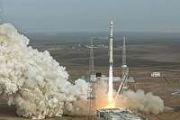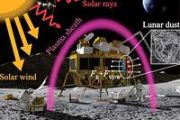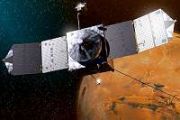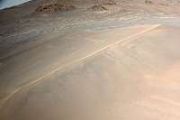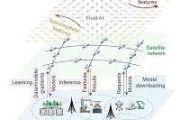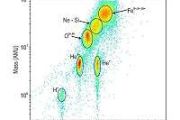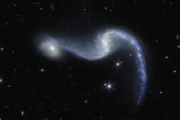
Copernical Team
Eclipse-maker: How Proba-3 subtracts the Sun

Hidden in plain sight within the Sun’s glare is the ultra-hot yet ghostly faint solar corona, source of the solar wind and solar storms. The only way to see this key element of the Solar System is either through the remarkable cosmic coincidence that gives rise to total solar eclipses – the fact that the Sun is not only 400 times bigger than our Moon but also about 400 times further away, allowing it to cover the solar disc entirely – or else through artificial Sun-obscuring telescopes.
The engine of Japan's flagship new small rocket explodes during a test for a second time
This request seems a bit unusual, so we need to confirm that you're human. Please press and hold the button until it turns completely green. Thank you for your cooperation!
Press and hold the button
If you believe this is an error, please contact our support team.
185.132.36.159 : 94ad1195-e36a-4cf5-86d0-ebac056a
Next up to the moon: Firefly's Blue Ghost lander to ship soon to Florida
This request seems a bit unusual, so we need to confirm that you're human. Please press and hold the button until it turns completely green. Thank you for your cooperation!
Press and hold the button
If you believe this is an error, please contact our support team.
185.132.36.159 : 970553fd-cb97-4eb4-86b7-56eacb28
Lockheed Martin to launch LM 400 partner to revolutionize maritime communications
 Lockheed Martin (NYSE:LMT) has announced its latest technological advancement with the upcoming launch of the LM 400, a versatile mid-sized satellite designed for multi-mission capabilities. Following the completion of rigorous testing, the satellite is set to launch aboard a Firefly Aerospace Alpha rocket in the first half of 2025.
According to Jeff Schrader, vice president of strategy an
Lockheed Martin (NYSE:LMT) has announced its latest technological advancement with the upcoming launch of the LM 400, a versatile mid-sized satellite designed for multi-mission capabilities. Following the completion of rigorous testing, the satellite is set to launch aboard a Firefly Aerospace Alpha rocket in the first half of 2025.
According to Jeff Schrader, vice president of strategy an China unveils cloud platform to expand remote-sensing data access
 China has officially launched the GEOVIS Cloud Open Platform, a public cloud service aimed at broadening access to aerospace information applications, including remote-sensing data. The platform, introduced on Friday, provides tools and services for diverse fields such as smart agriculture, environmental management, urban development, traffic oversight, and disaster monitoring.
This innova
China has officially launched the GEOVIS Cloud Open Platform, a public cloud service aimed at broadening access to aerospace information applications, including remote-sensing data. The platform, introduced on Friday, provides tools and services for diverse fields such as smart agriculture, environmental management, urban development, traffic oversight, and disaster monitoring.
This innova WEAVE's first results illuminate galactic collisions in Stephan's Quintet
 Using early observations from the William Herschel Telescope's Enhanced Area Velocity Explorer (WEAVE), a collaborative team of over 50 astronomers, led by Dr. Marina Arnaudova of the University of Hertfordshire, has unveiled key insights into Stephan's Quintet. These findings mark the first major scientific results produced by WEAVE, a cutting-edge spectrograph designed to transform galactic st
Using early observations from the William Herschel Telescope's Enhanced Area Velocity Explorer (WEAVE), a collaborative team of over 50 astronomers, led by Dr. Marina Arnaudova of the University of Hertfordshire, has unveiled key insights into Stephan's Quintet. These findings mark the first major scientific results produced by WEAVE, a cutting-edge spectrograph designed to transform galactic st Nanoink and space printing technologies pave the way for space-based electronics production
 Researchers from Iowa State University have taken their innovative printing technologies to the skies - literally. Led by Shan Jiang, associate professor of materials science and engineering, and Hantang Qin, now an assistant professor at the University of Wisconsin-Madison, the team explored the potential of their nanoink and printing system in the microgravity conditions of space.
The in
Researchers from Iowa State University have taken their innovative printing technologies to the skies - literally. Led by Shan Jiang, associate professor of materials science and engineering, and Hantang Qin, now an assistant professor at the University of Wisconsin-Madison, the team explored the potential of their nanoink and printing system in the microgravity conditions of space.
The in Anduril secures contract to upgrade space surveillance network
 Anduril has been awarded a $99.7 million Indefinite Delivery Indefinite Quantity (IDIQ) contract, along with a five-year Program of Record designation, by the U.S. Space Systems Command to modernize the U.S. Space Surveillance Network (SSN). This initiative aims to implement Lattice, Anduril's resilient mesh networking system, as part of the broader effort to advance the Space Domain Awareness N
Anduril has been awarded a $99.7 million Indefinite Delivery Indefinite Quantity (IDIQ) contract, along with a five-year Program of Record designation, by the U.S. Space Systems Command to modernize the U.S. Space Surveillance Network (SSN). This initiative aims to implement Lattice, Anduril's resilient mesh networking system, as part of the broader effort to advance the Space Domain Awareness N Europa Clipper deploys instruments on journey to icy moon of Jupiter
 NASA's Europa Clipper spacecraft, launched on October 14, is well on its way to Jupiter's moon Europa, having already traveled 13 million miles (20 million kilometers) from Earth. The mission, designed to determine whether Europa's icy crust and subsurface ocean can support life, has successfully deployed critical instruments that will remain active throughout its decade-long journey and mission
NASA's Europa Clipper spacecraft, launched on October 14, is well on its way to Jupiter's moon Europa, having already traveled 13 million miles (20 million kilometers) from Earth. The mission, designed to determine whether Europa's icy crust and subsurface ocean can support life, has successfully deployed critical instruments that will remain active throughout its decade-long journey and mission Space transportation leader Isar Aerospace secures 15 million euros ESA contract
 Isar Aerospace has signed a new contract worth over 15 million euros with the European Space Agency (ESA) under the Boost! program. This funding strengthens the company's position as Europe's most well-funded independent New Space company, with over 400 million euros in private backing, and enhances Europe's commercial space transportation capabilities to ensure sovereign access to space.
Isar Aerospace has signed a new contract worth over 15 million euros with the European Space Agency (ESA) under the Boost! program. This funding strengthens the company's position as Europe's most well-funded independent New Space company, with over 400 million euros in private backing, and enhances Europe's commercial space transportation capabilities to ensure sovereign access to space. 



